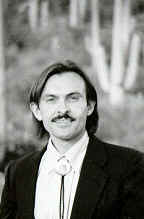However, the inherent contradiction within the fundamentalist position is what happens when an Indian marries a non-Indian. How could they maintain a relationship in which one person isn't allowed any contact with the other's culture. And what about the children? Should they be denied access to their heritage for being half-white, or another ethnicity? And what about professionals who work with aboriginal people? Wouldn't they do their job better if they were more immersed in the culture? I think we can't help but be all mixed up in each others' stories in this modern world. A Tuscarora elder told me that the proof was in how a position makes you feel. If an idea makes you hateful or angry or mean, he said, it's a bad idea. If it makes you kind or nicer or reduces suffering in the world, it's a good idea.
My other controversy of last week related to whether or not I had the right to teach "Cherokee bodywork." I thought this merited a discussion of attribution. Native scholars with whom I have spoken, believe that the father of American osteopathy, A.J. Still, took much of it from the First Nation, which he served for years, who had a form of bodywork remarkably familiar to American osteopathy. The story told about Still is that he walked into the woods with a bag of bones and returned with the field of osteopathy and its manipulations. Similarly, I am told that Palmer learned from Native people in his invention of chiropractic. Neither gave any attribution to those from whom they had learned. Of course, we know why. In those days, anything derived from Indians, was scorned (never mind, tobacco, corn, peppers, tomatoes, and a host of other important products and skills).
I learned the form of bodywork that I practice from Cherokee practitioners of this art. I paid to be taught. I brought gifts, repaired swamp coolers, got groceries, and was generally helpful. I learned by being worked on and by helping them work on others. I had to promise not to tell people that they were teaching me (similar to Walker and his mentors in the 1890s). I had to promise not to teach what I learned until they were dead. They didn't know how people would react and didn't want to find out.
My decision to start teaching and sharing what I am calling Cherokee bodywork came when I gave a lecture in Tahlequah, Oklahoma, sponsored by the Cherokee Nation. I learned that less than 10% of the audience had ever seen or experienced the bodywork of the Cherokee. I feared it would disappear if action wasn't taken. Henceforth, I started to teach.
Since making that decision, I have met others who learned Cherokee bodywork as I did and have confirmed that what I am doing is similar to what they learned. I have met others who have received Cherokee bodywork and have confirmed it's similarity to what I am doing. My goal is to preserve it. I don't want to trademark it, and I hope that it flourishes and the Cherokee, as a culture, get the credit for this form of work. I suspect I have modified it some in the practice as we all do. I have certainly been more intentional about combining narrative therapies with the bodywork. My teachers practiced their own form of narrative therapy, chatting with people about their lives, listening to the stories of the community, telling stories some traditional, some about people they knew, and some made up on the spot to influence their client to "do right". I am hoping we can start a Center for Indigenous Body Therapies through Coyote Institute, and bring forward other indigenous forms of bodywork that are in danger of disappearing.




